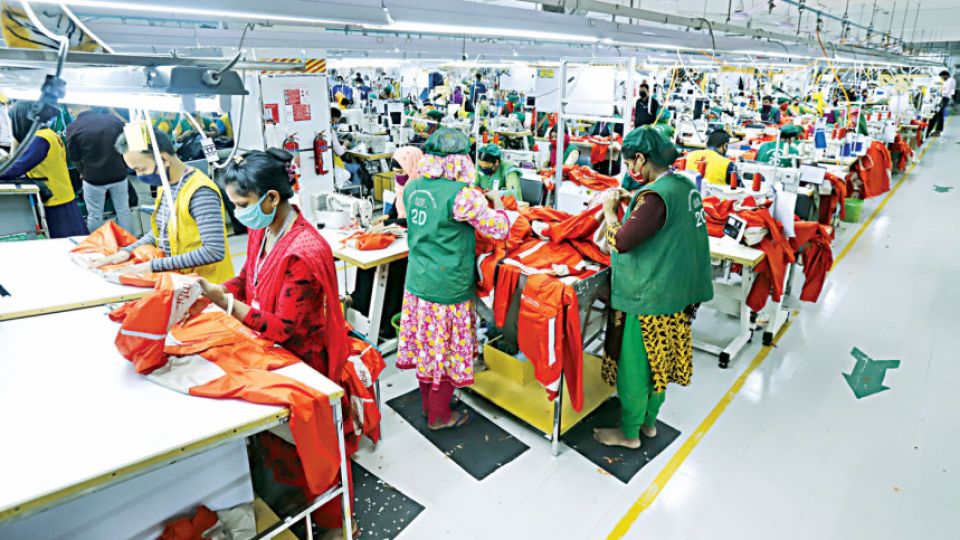January 19, 2022
DHAKA – Spending behind apparel and footwear in the US exceeded pre-pandemic levels in every month of 2021, says a new study by online personal styling service Stitch Fix. And this translates as good fortunes for Bangladeshi exporters.
The US apparel and footwear spending is expected to grow 30 per cent year-over-year, Stitch Fix said in its 2022 Style Forecast report on January 14.
The pandemic greatly accelerated the shift toward online shopping. E-commerce grew to account for 36 per cent of total apparel and footwear sales in 2020, versus 26 per cent in 2019, it said.
It is expected to remain at about 32 per cent even as the world reopens, it added.
Available in the United States and United Kingdom, the styling service uses recommendation algorithms and data science to personalise clothing items based on size, budget and style.
The study is based on data collected from 4.2 million clients and thousands of expert stylists and merchandisers.
Bangladesh is a major exporter of garment and leather footwear goods to the US markets.
Apparel export to the American markets from Bangladesh grew 45.91 per cent year-on-year to $4.23 billion in the July-December period.
Export of goods and footwear made of leather to the US markets also increased thanks to high demand from retailers and brands.
The export growth was mainly driven by three factors — the US-China trade tension, strength in production of both basic garment items and those in the middle range of price and quality, and competitive prices.
“I agree with the Stitch Fix findings as export from my garment factories has been rising steadily to the US markets,” said AK Azad, chairman and chief executive officer of Ha-Meem Group, a leading exporter.
He exported $550 million worth of garment items in 2021 of which 95 per cent went to the US markets. This year some $100 million-worth more garment items are expected to be shipped to the US markets.
Similarly, Md Shahidullah Chowdhury, chief executive officer of Noman Group, another leading garment exporter, said his group has also been receiving more work orders from the US-based retailers and brands this year compared to last year.
“I also agree with the Stitch Fix findings,” Md Saiful Islam, president of the Leathergoods and Footwear Manufacturers & Exporters Association of Bangladesh.
Western retailers and brands have been heading over to Bangladesh with plenty of work orders in an attempt to diversify sources and reduce overdependence on a single source.
Islam said leather and leather goods and footwear export have witnessed growth of over 18 per cent year-on-year in the July-December period.
The US retailers and brands need a lot of finished goods at this time of recovery and they are coming here now, said Islam, also the president of the Metropolitan Chamber of Commerce and Industry.
Agreeing with the findings, Md Shahidullah Azim, managing director of Classic Fashion, said garment export to the US markets at the end of the year may cross $8 billion as the growth was very high.
“We are feeling the effect US retailers and brands are having through the high volume of export orders for garment items,” said Faruque Hassan, president of the Bangladesh Garment Manufacturers and Exporters Association.
“We have already received 30 per cent more work orders than what was estimated for the past six months,” he said.
“Confidence on Bangladeshi apparel items has improved a lot following the strengthening of workplace safety and continuation of product supply even during the pandemic’s peak,” he said. Talking to The Daily Star over the phone, Hassan also said the local manufacturers were also very strong in the production of garment items which Stitch Fix talked about in the report.
The new normal has made people eager to revamp their wardrobes, with two-thirds (67 per cent) of consumers likely to swap out clothes, said Stitch Fix.
On an average, they are looking to replace about one-third of their wardrobe, with 33 per cent planning to replace at least half.
People got a taste for comfort during lockdowns, and they are not about to give it up — almost one-third (31 per cent) would rather take a 10 per cent pay cut than dress up for work every day — but they still want to balance it with style.
Workwear like stretchy blazers, knoven (knit + woven) tops and elastic-waist bottoms are proving that both are attainable, according to Stitch Fix findings.
So long, sweatpants — the 30 per cent year-over-year increase Stitch Fix saw in denim sales suggests denim is back in a big way.
Today, clients are turning toward straight leg, wide leg and relaxed styles over skinny jeans.


